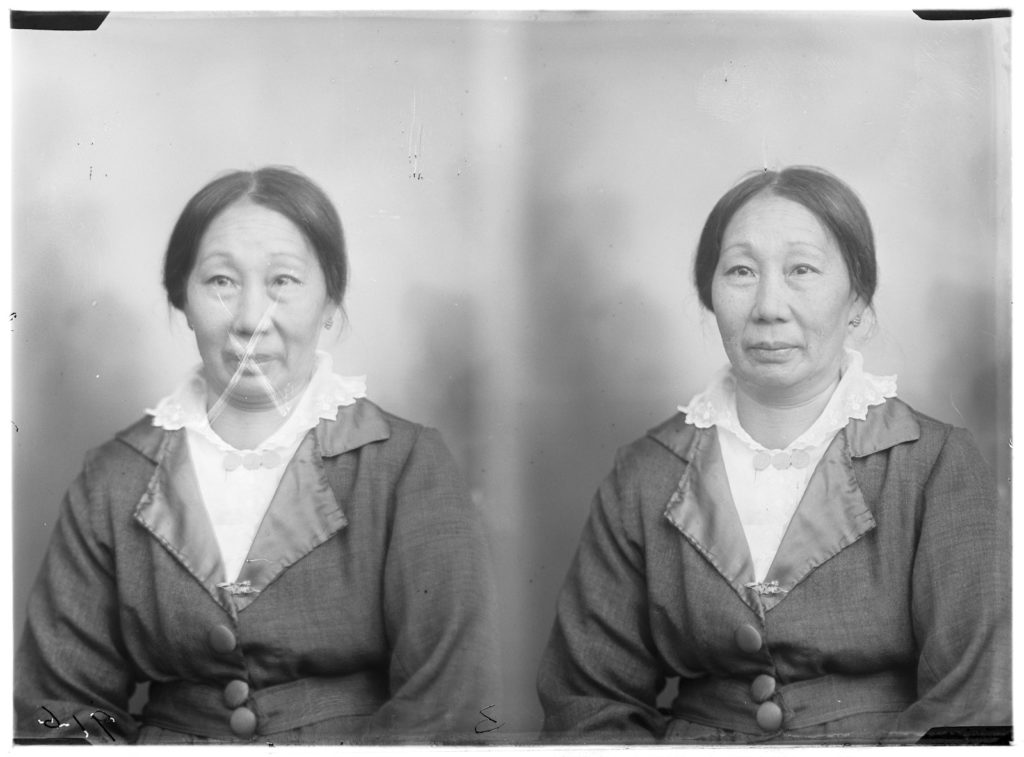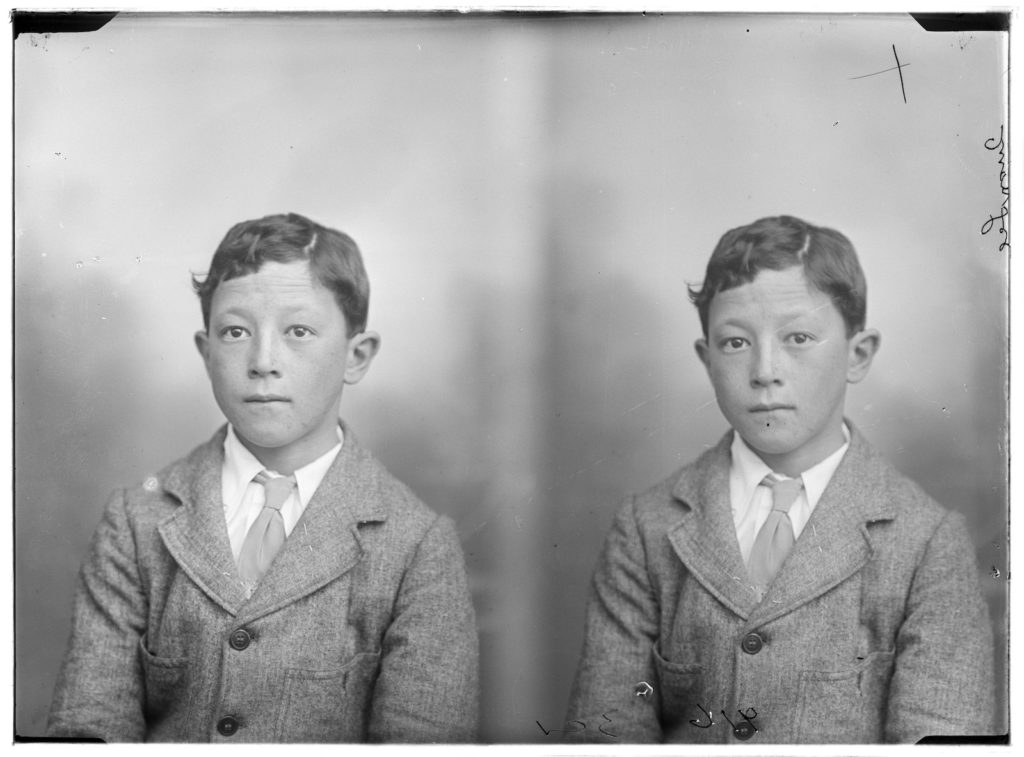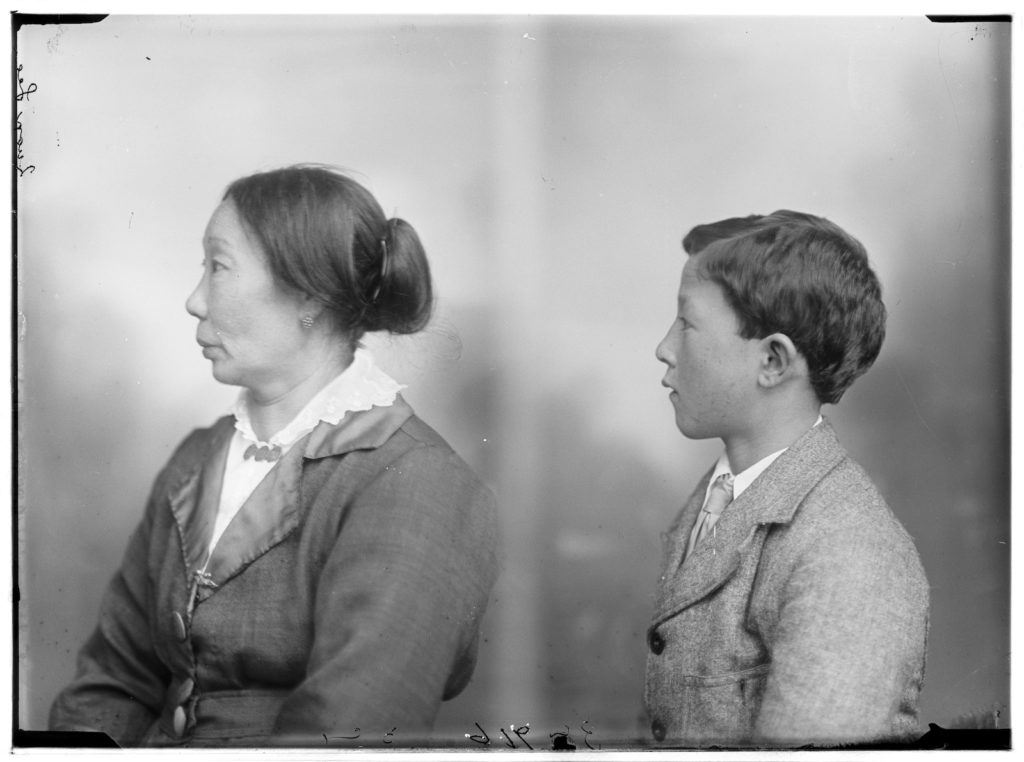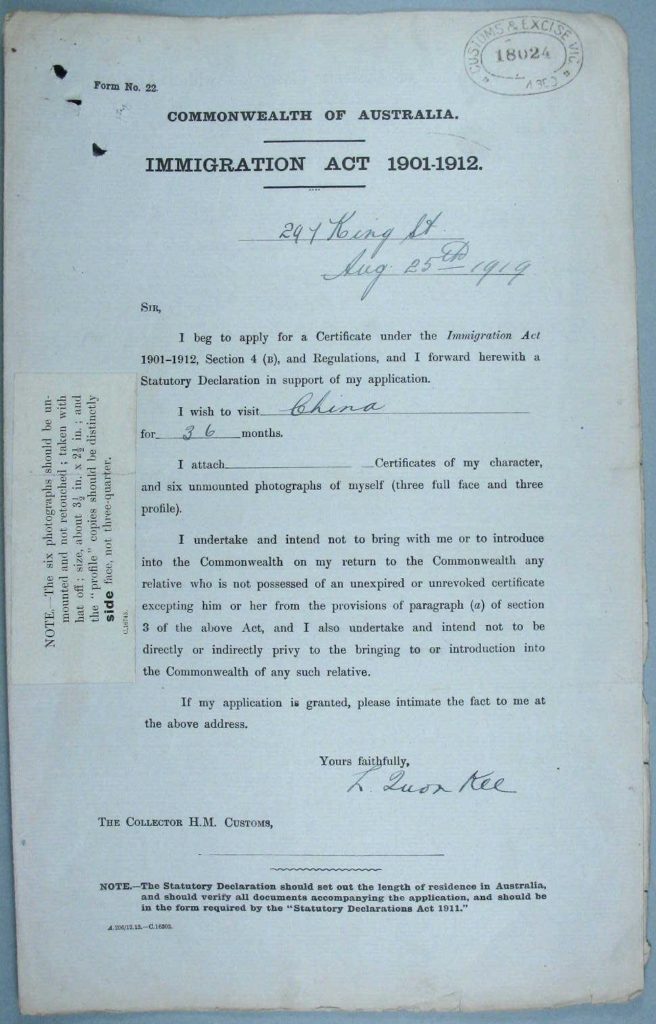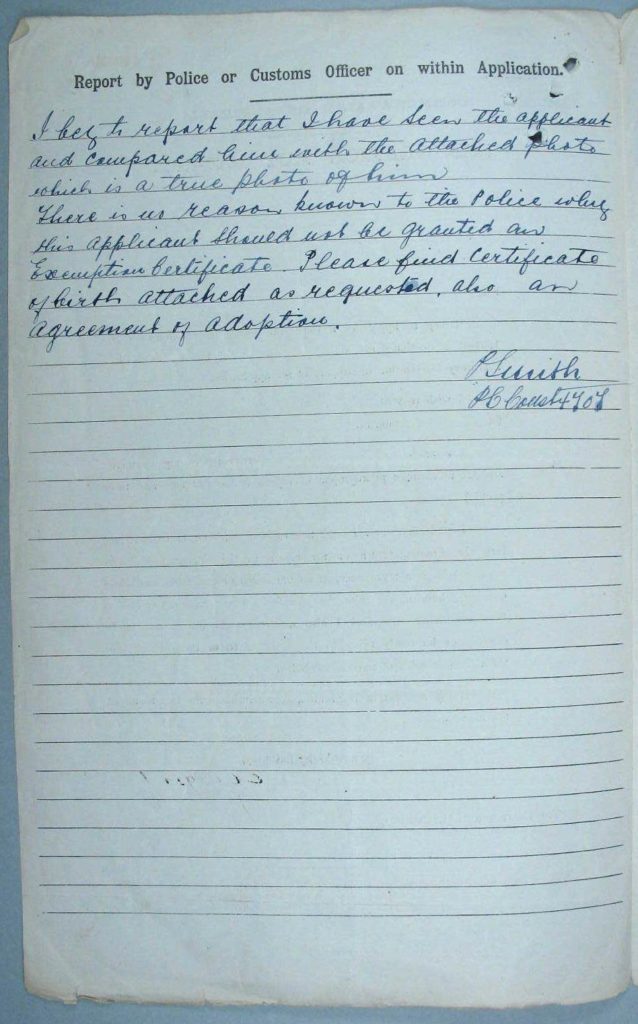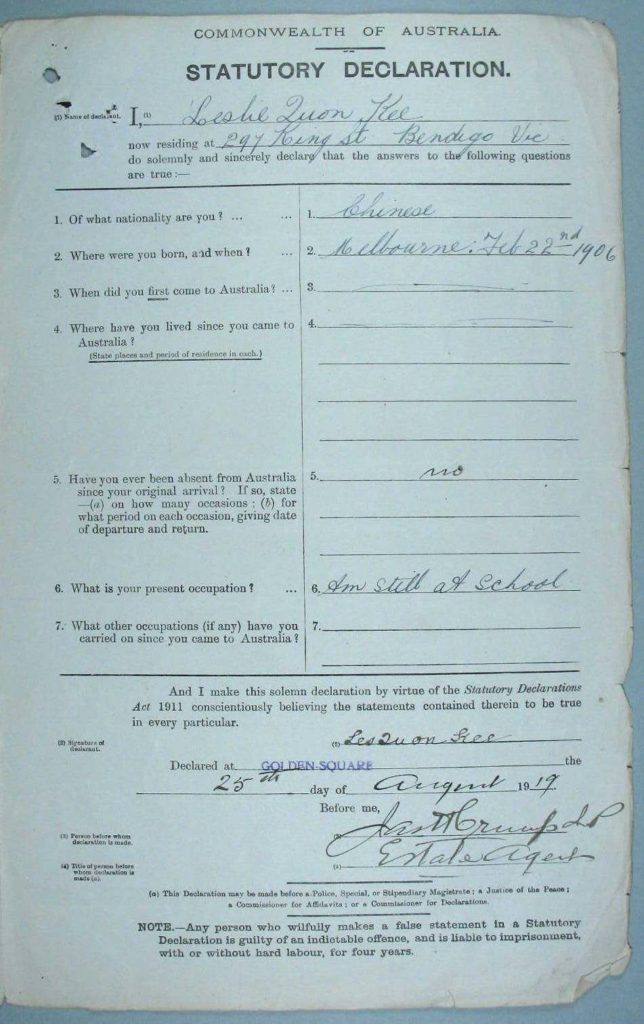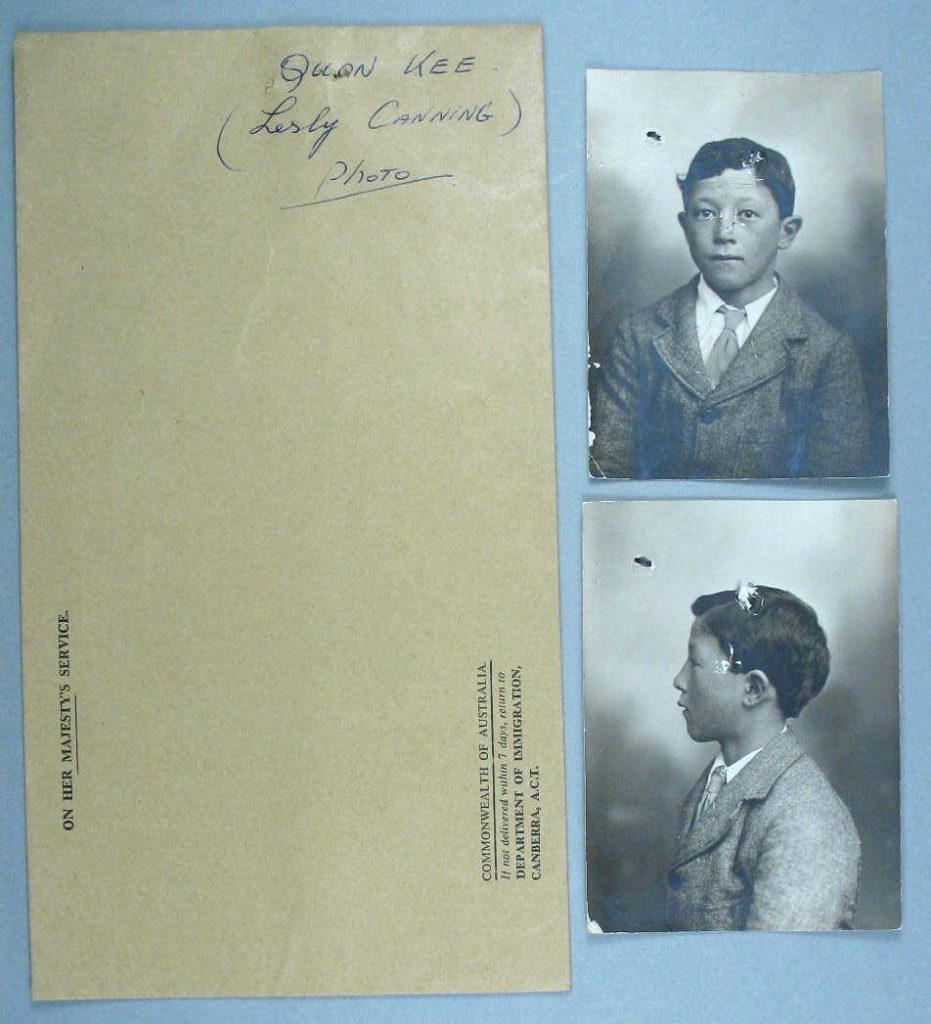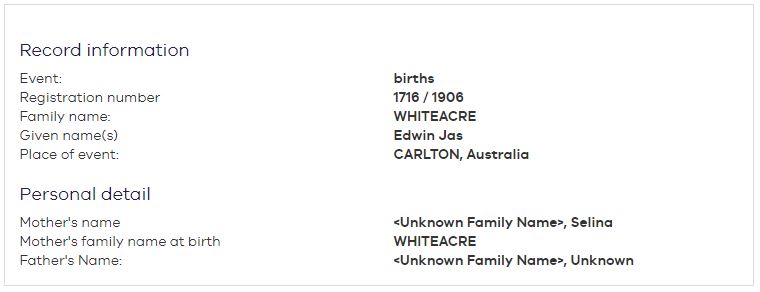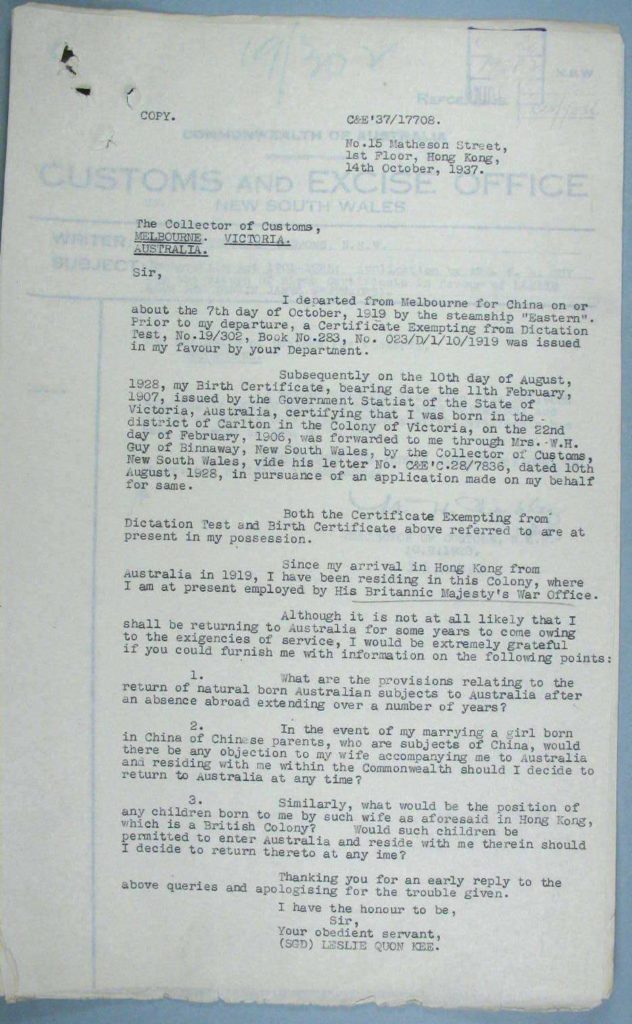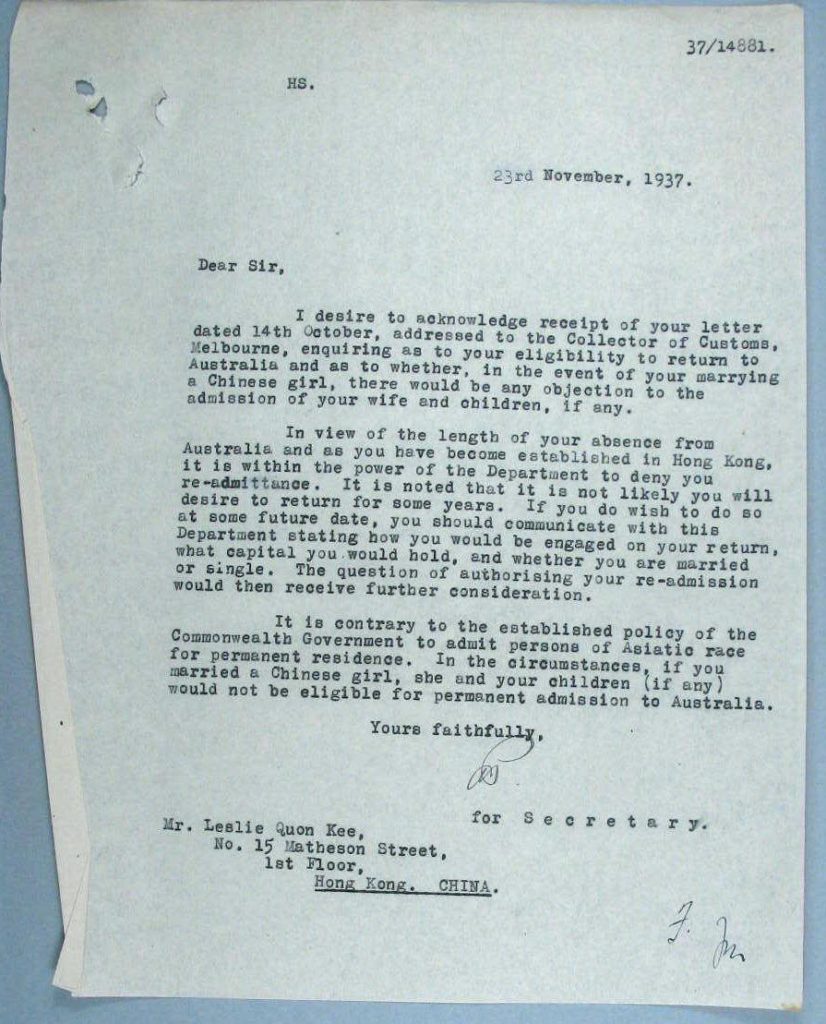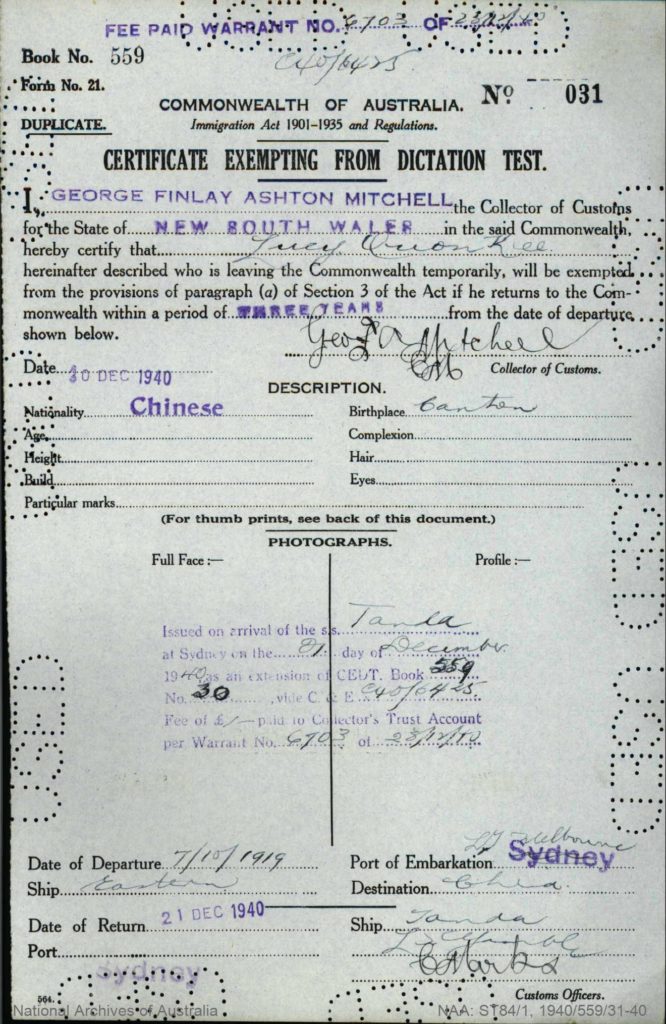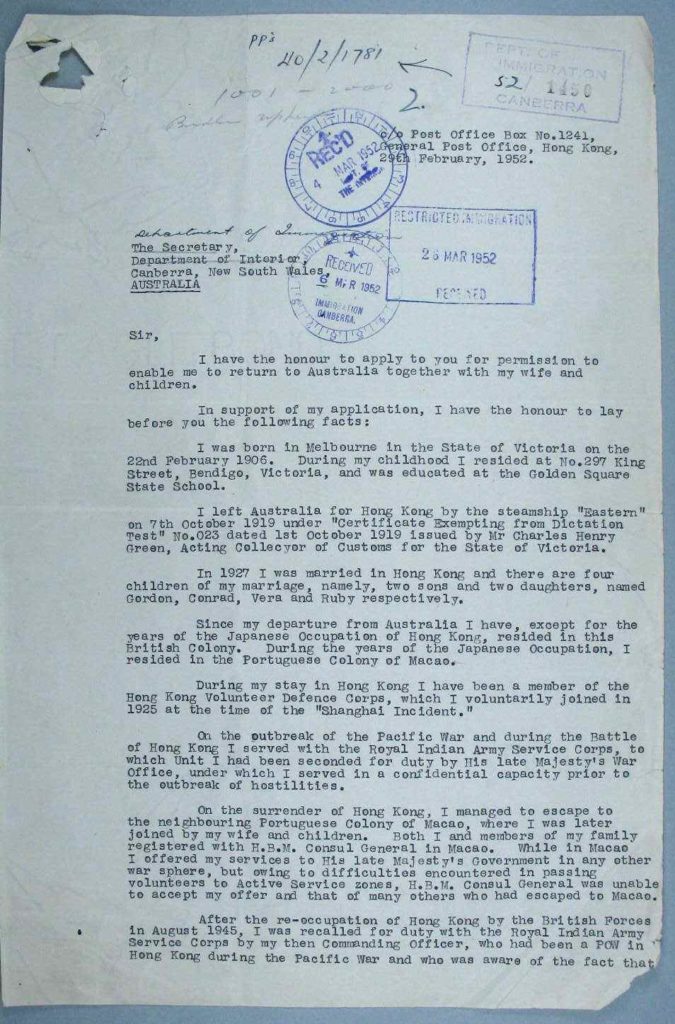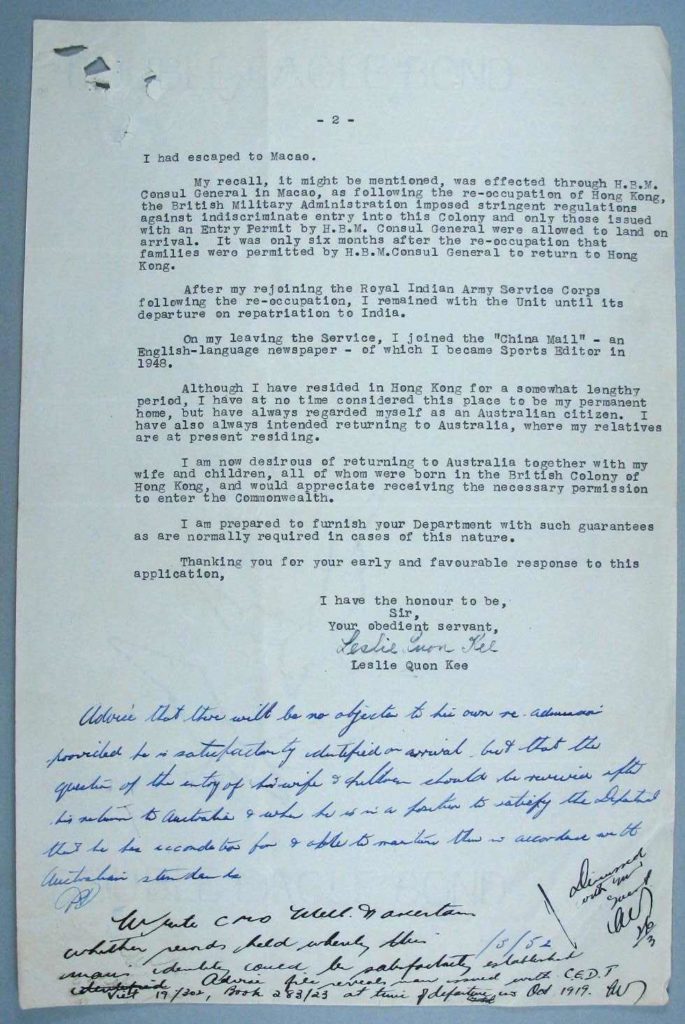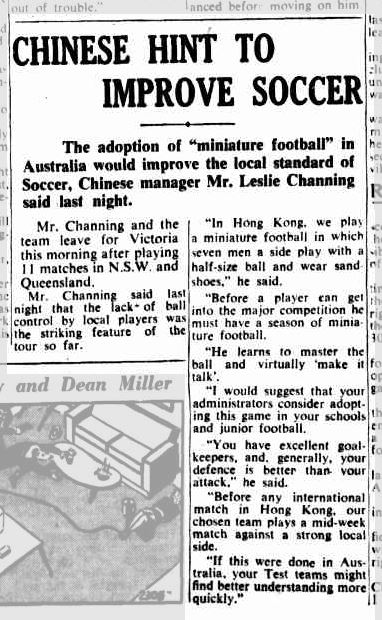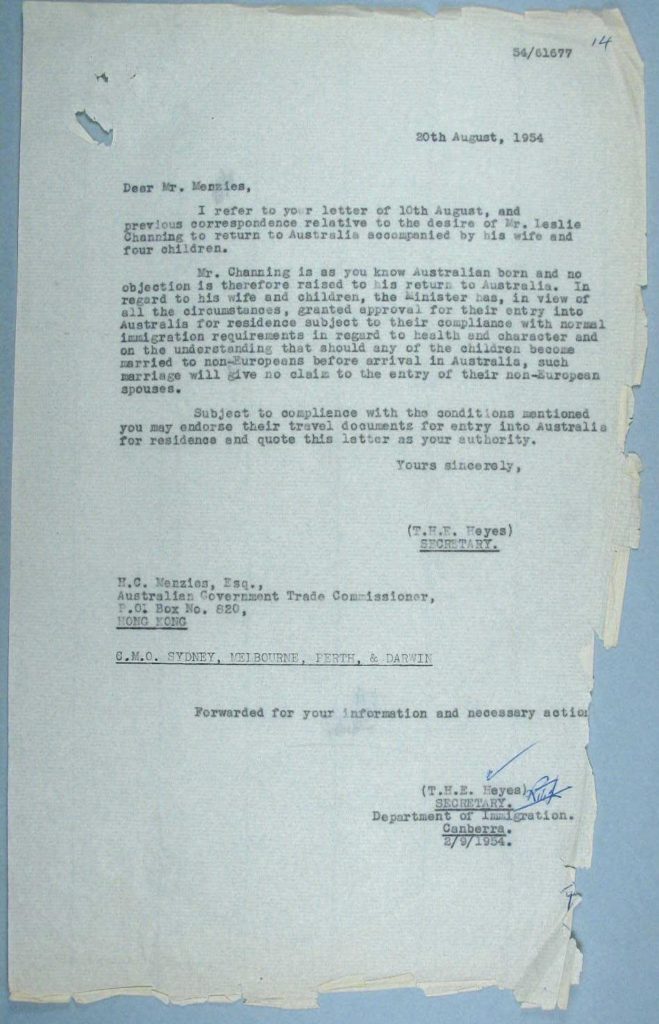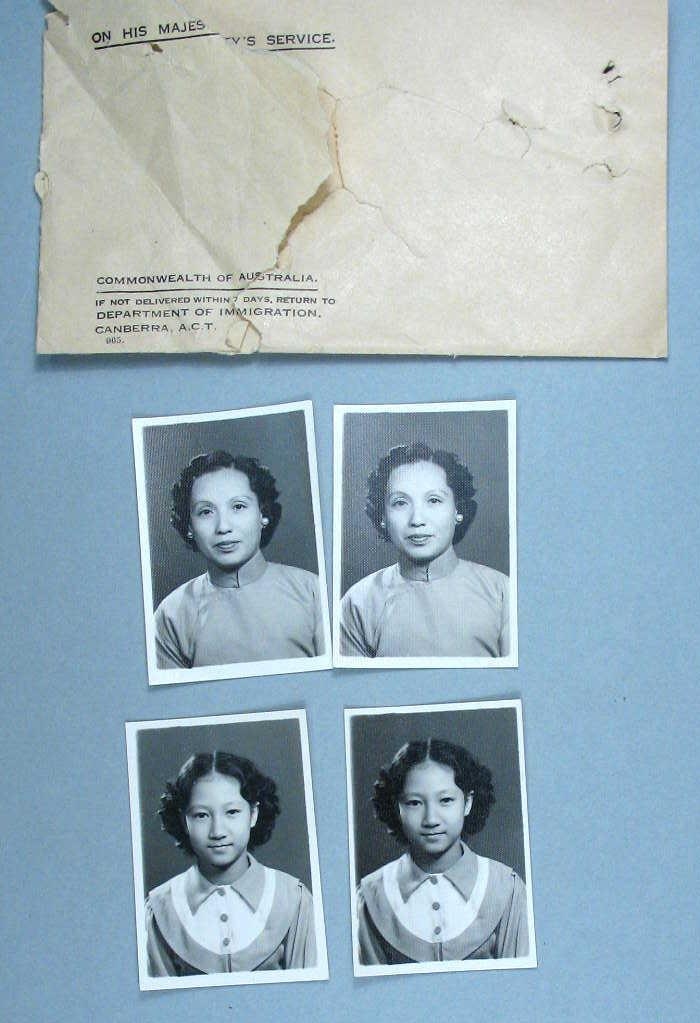By Anna Wolf (Chinese Australian Family Historians of Victoria)
In May 2019, walking past the Chinese Museum in Little Bourke Street on my way to a yum cha with my husband’s family, I was thinking that I had not been to the museum for a long time. So when I got home, I looked up the museum’s website to see what was currently on exhibition. I saw the information about CAFHOV’s Victorian CEDT Index transcription project and promptly registered my interest.
My parents were from Toisan (台山) in what was called Canton (now Guangdong province). My father came to Australia directly from China in 1949, my mother and I came from Hong Kong in 1960. Both my parents passed away in 2012. From brief mentions and snippets of stories told at family gatherings, I had always believed that my father came to Melbourne to work for an uncle in a shop called ‘On Hie’ (安泰, pronounced ‘On Hie in Toisan dialect and ‘On Tai’ in Cantonese) in Chinatown. I did not know the name of this uncle and did not enquire much about my father’s life here.
I have always been interested in family history and had just finished working on a project on my father-in-law’s German Jewish family, as well as helping a friend with her research of her family roots in Devon in the United Kingdom. I had thought it fairly difficult, if not impossible, to find out information about my Chinese side of the family. Firstly, due to my poor knowledge of reading and writing Chinese (my Chinese education stopped at primary grade 2), and also not knowing even where to start.
The day I spent at the Chinese Museum learning about transcribing the index changed everything. I didn’t find information about my family straight away, but using the Index after the transcribing was completed, I found my great grandfather! I had found a copy of the family tree from my father’s things, and just out of curiosity, I translated my great grandfather’s name, 雷良學, into English (phonetically) and looked it up. And there it was. On page 153 of the register for 1933, entry no.5 – ‘Louey Leong Hock’, and better yet, in brackets ‘Louey Kay’!


His alias, Louey Kay, would have been this – 雷記. The character 記 is actually pronounced “Gey” (in both dialects). It is usually the last character in a shop name, like company or brand. It is also a sort of a nickname used by close friends to denote that person is the boss of the shop. ‘Louey Kay’ is therefore the name used for my great grandfather by his friends and business associates.
From this entry’s information, I was able to trace his movements and discovered he came to Australia in 1899 and left in 1933. He was 61 when he left, and he died in China in 1934. I am fortunate that one of my Louey cousins is in Guangzhou and he is interested in family history. Through the magic of language translation apps, I have been able to communicate with him to a degree and to confirm some facts and approximate times. And through CAFHOV members, I have received advice about how to search for further records using the services of the Public Records Office of Victoria (PROV) and the National Archives of Australia (NAA).
It was getting my great grandfather’s folder of CEDT documents from the NAA in my hands that was the eureka moment. I was able for the first time to see a photo of my great grandfather, and to share this precious find with my cousins who have never seen him before. Even my father’s oldest living brother was surprised. I guess photography was a rare thing in rural China in the early 1900s, and my uncles and aunts were too young, or not even born when he went back to China that last time.
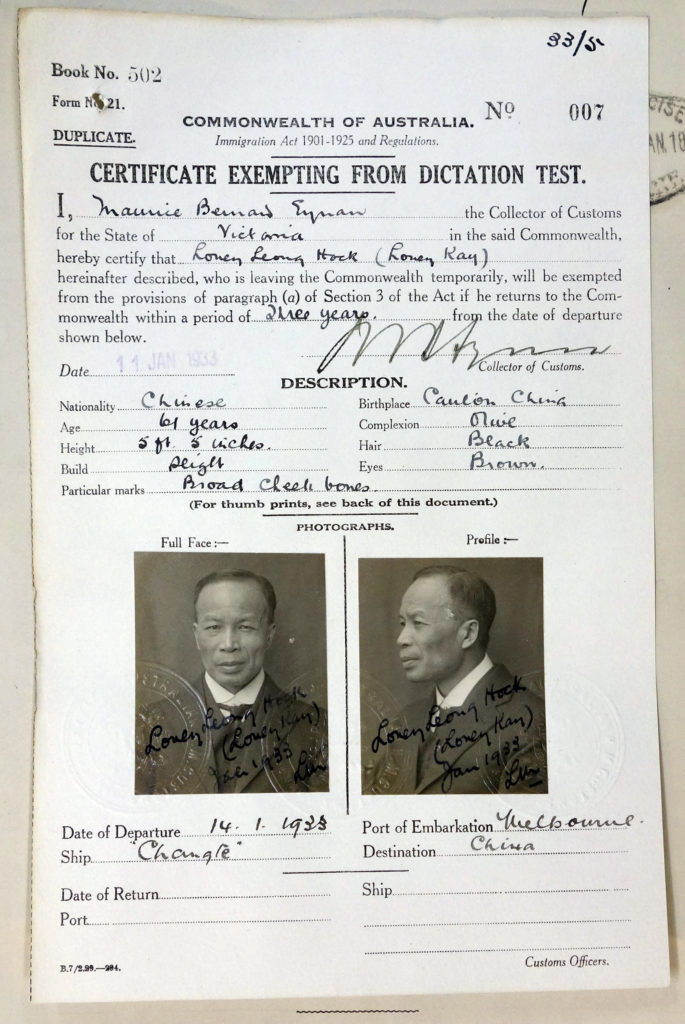
[NAA: B13, 1933/638]
The contents of the documents have enabled me to do further research about my great grandfather. Knowing his alias, ‘Louey Kay’, from the Index, I have discovered he travelled back to China three times before his last trip. He worked and lived for a time in Bendigo and Melbourne.
Through information gathered from my cousin, as well as PROV and Trove, I believe he was involved in a Chinese herbal medicine business in Little Bourke Street called ‘Quong Tsy Hong’ (廣善堂) in the early 1900s, and then in a shop in Bendigo called ‘On Loong’. From about 1915, he worked as a storekeeper at ‘On Hie’ at 210 Little Bourke Street. This was the business that I believe was part-owned by my great grandfather and his direct cousin Louey Fee Hock. This must have been the ‘uncle’ from the family stories I’d heard.
This is about as far as I have got in my research before COVID hit us. I need to get in touch with some old-timers in Bendigo and Melbourne’s Chinatown in order to find out more about these shops and the people who owned or worked in them. And of course, it would be helpful to go to my father’s old village to see the family home. But it has been a very interesting journey so far.


